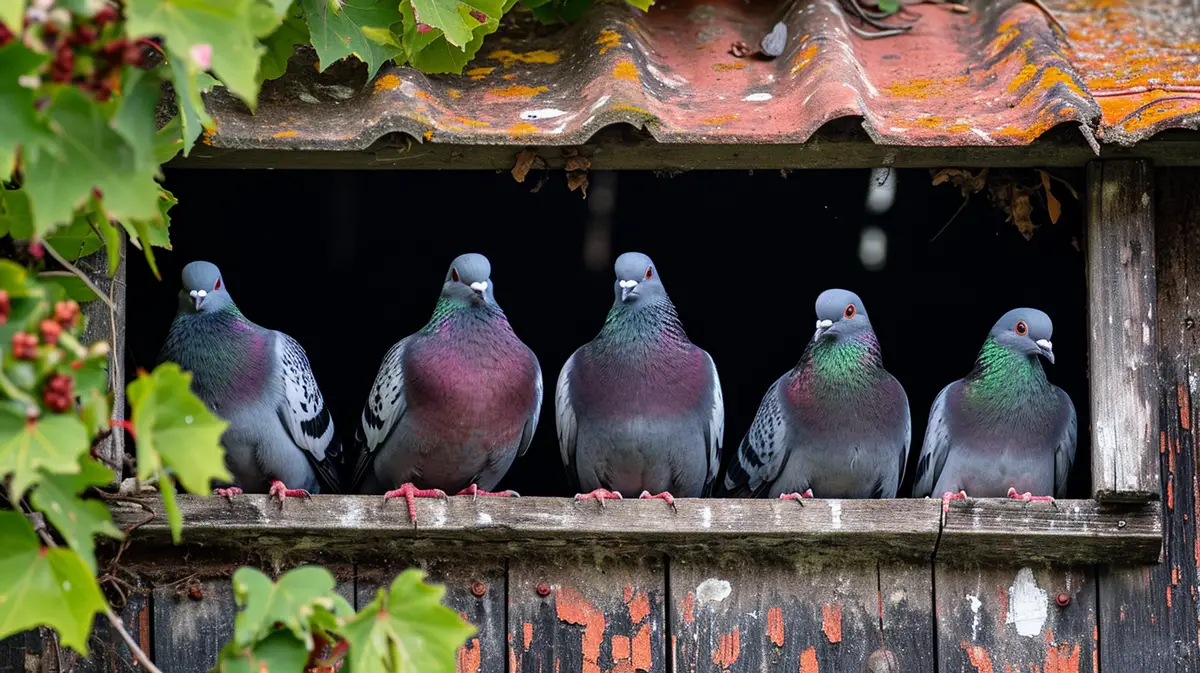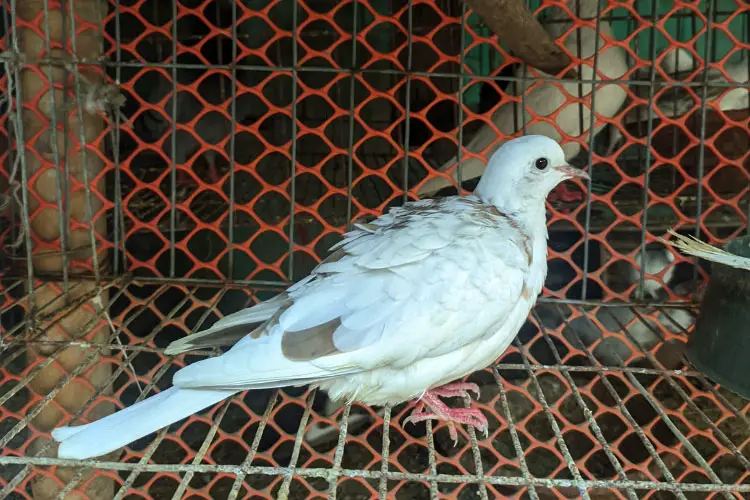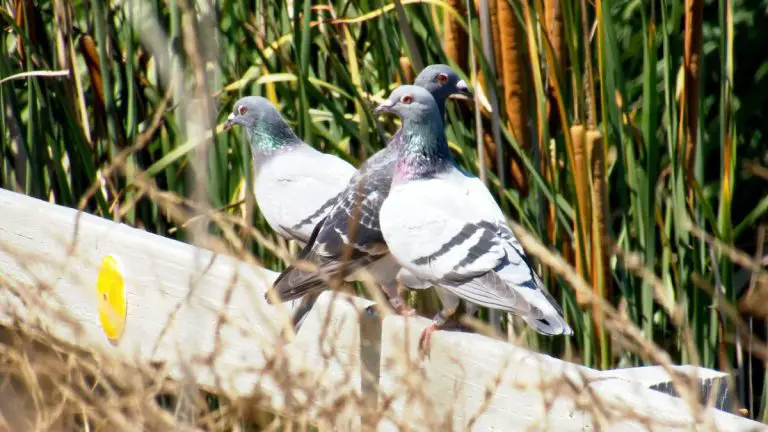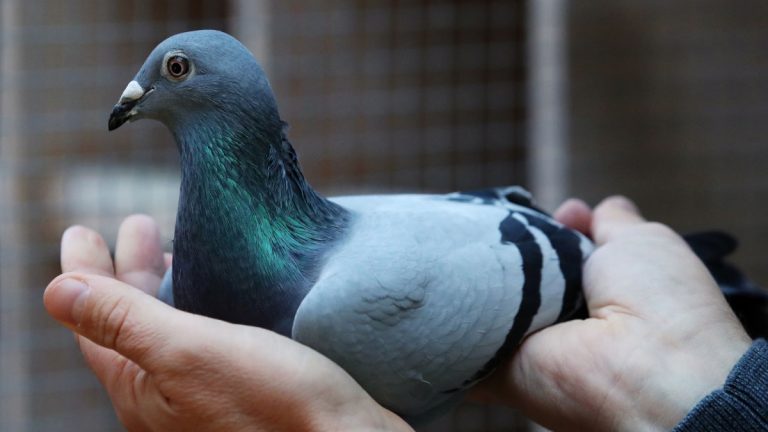Preventing Common Pigeon Diseases: Essential tips
Pigeons are fascinating creatures that have been a part of our urban landscape for centuries. However, as much as we admire their beauty and grace, it’s important to be aware of the potential health risks they can pose. In this article, I’ll be discussing some of the most common diseases that affect pigeons and how you can take proactive measures to prevent them.
One of the most prevalent diseases among pigeons is avian pox. This viral infection can cause unsightly lesions on their skin and be transmitted through direct contact or contaminated surfaces. Another common ailment is pigeon paramyxovirus, which can lead to respiratory issues and even death. By understanding the symptoms and implementing preventive measures, we can help protect these birds from these debilitating diseases.
Preventing pigeon diseases is not only crucial for the well-being of these birds, but also for the safety of humans. By taking simple steps like maintaining clean feeding areas and ensuring proper hygiene, we can create a healthier environment for both pigeons and ourselves. So, let’s dive in and explore the world of common pigeon diseases and the preventive measures we can take to keep them at bay.
Avian Pox: Causes, Symptoms, and Prevention
Avian pox is one of the common diseases that can affect pigeons. It is a viral infection that spreads through direct contact with infected birds or contaminated surfaces. In pigeons, avian pox manifests as skin lesions, which can appear as small, wart-like growths or scabs on their bodies or around their eyes.
The primary cause of avian pox is a virus called the avipoxvirus. This virus can survive in the environment for extended periods, making it easy for the infection to spread among pigeons. It is important to note that avian pox is not contagious to humans or other animals.
The symptoms of avian pox can vary depending on the severity of the infection. Pigeons with mild cases may only show small nodules on their skin, while those with more severe infections may experience difficulty breathing, eating, or flying. In severe cases, the disease can even lead to death.

Preventing avian pox is crucial for the well-being of pigeons. Here are some preventative measures that can be taken:
- Maintain a clean and hygienic environment: Regularly clean feeding areas and remove any droppings or debris that may harbor the avipoxvirus.
- Control mosquito populations: Mosquitoes are known to transmit avian pox. Implement measures to reduce mosquito populations, such as removing standing water and using mosquito repellents.
- Isolate sick or infected pigeons: If you notice any pigeons exhibiting symptoms of avian pox, isolate them from the rest of the flock to prevent further spread of the disease.
- Monitor and practice biosecurity: Regularly monitor your flock for any signs of avian pox. Implement biosecurity measures such as quarantining new birds, disinfecting equipment, and preventing contact with wild birds.
By following these preventative measures, you can create a healthier environment for your pigeons and reduce the risk of avian pox. Remember, early detection and prompt intervention are key to minimizing the impact of this disease on your flock.
Pigeon Paramyxovirus: Understanding the Risks
As a pigeon owner, it’s important to be aware of the various diseases that can affect these birds. One such disease is Pigeon Paramyxovirus, which can pose significant risks to the health of your pigeons. In this section, I’ll provide you with an overview of Pigeon Paramyxovirus and how you can take preventive measures against it.
Pigeon Paramyxovirus, or PMV, is a virus that primarily affects pigeons and doves. It is highly contagious and can spread rapidly within a flock. PMV can be transmitted through direct contact with infected birds, as well as through the respiratory secretions and droppings of infected birds.
Symptoms of PMV can vary from mild to severe. Some common signs to look out for include:
- Respiratory problems, such as sneezing, wheezing, and nasal discharge.
- Digestive issues, including diarrhea and weight loss.
- Nervous system disorders, which may result in abnormal behavior, tremors, or paralysis.
Unfortunately, PMV can be fatal for pigeons, especially in cases of severe infection. It’s essential to take proactive steps to prevent the spread of the virus and protect your flock.

Here are some measures you can take to minimize the risk of PMV:
- Vaccination: Consult with a veterinarian to ensure your pigeons are up to date on their PMV vaccination. Regular vaccinations can greatly reduce the chances of infection and help protect the overall health of your birds.
- Isolation: If you introduce new pigeons to your flock, make sure to quarantine them for a few weeks to observe any signs of illness. This practice can prevent the spread of any potential diseases, including PMV.
- Biosecurity: Practice good hygiene and biosecurity measures to minimize the risk of disease transmission. This includes regularly cleaning and disinfecting your coop, equipment, and feeding areas. Wash your hands thoroughly before and after handling pigeons to avoid spreading any potential infections.
- Mosquito control: Mosquitoes can serve as vectors for PMV transmission. Implement effective mosquito control measures, such as eliminating standing water sources and using mosquito repellents, to minimize the risk of exposure to PMV.
Respiratory Issues in Pigeons: Causes and Solutions
Respiratory issues in pigeons are common and can have various causes. As a pigeon owner, it’s essential to understand these causes and take appropriate measures to prevent and treat respiratory problems. In this section, I will discuss the causes of respiratory issues in pigeons and provide some solutions to help you maintain the health of your flock.
Causes of Respiratory Issues
- Damp and Poorly Ventilated Environment: A damp and poorly ventilated loft can create an ideal breeding ground for bacteria, fungi, and parasites, leading to respiratory problems in pigeons. Maintaining a clean and dry loft is crucial to prevent these issues.
- Viral and Bacterial Infections: Pigeons can contract respiratory infections from other infected birds, such as the highly contagious Pigeon Paramyxovirus (PMV) mentioned earlier. Additionally, bacterial infections like Mycoplasmosis can also contribute to respiratory issues. Isolating sick pigeons and practicing biosecurity measures are essential to prevent the spread of these infections.
- Allergens and Irritants: Pigeons can be sensitive to certain allergens and irritants in the environment, such as dust, mold, and strong fumes. Regular cleaning and proper ventilation can help reduce the exposure of pigeons to these substances.
- Maintain a Clean Environment: Regularly clean and disinfect your pigeon loft to prevent the buildup of bacteria, fungi, and parasites. It’s also essential to remove any damp bedding or nesting material promptly.
- Improve Ventilation: Proper ventilation is crucial to prevent respiratory issues. Ensure that your loft has sufficient air circulation to reduce humidity levels and remove stagnant air.
- Practice Good Hygiene: Wash your hands thoroughly before and after handling your pigeons to prevent the transmission of any potential infections. Additionally, avoid overcrowding in your loft, as it can contribute to the spread of respiratory diseases.
- Provide a Balanced Diet: A healthy diet is essential for maintaining a pigeon’s immune system. Ensure your pigeons have access to nutritious food and clean water to support their respiratory health.
Preventing Disease Transmission in Pigeons

Now that we’ve discussed common respiratory issues in pigeons and how to maintain their respiratory health, let’s focus on another crucial aspect: preventing disease transmission. Here are a few important steps you can take to keep your pigeons healthy and reduce the risk of disease spread:
- Isolate sick pigeons: If you notice any signs of illness in one of your pigeons, such as nasal discharge, coughing, or lethargy, it’s important to separate the sick bird from the rest of the flock. This prevents the potential spread of diseases to healthy pigeons.
- Practice biosecurity measures: Biosecurity plays a significant role in disease prevention among pigeons. Make sure to thoroughly clean and disinfect the loft regularly, especially after an illness. Additionally, limit visitor access to the loft and use foot baths and hand sanitizer before entering to minimize the introduction of harmful pathogens.
- Limit contact with other pigeons: Pigeons can contract diseases from close contact with other infected birds. A common example is Pigeon Paramyxovirus (PMV), which spreads through direct and indirect contact. To prevent disease transmission, avoid bringing in new pigeons without proper quarantine and testing procedures.
- Maintain good hygiene: Proper hygiene practices are essential for disease prevention in pigeons. Regularly clean feeders, waterers, and perches to reduce the accumulation of bacteria and viruses. Remove droppings and disinfect the loft to minimize the presence of pathogens.
- Monitor for signs of illness: Regularly observe your pigeons for any signs of illness. Early detection can help prevent the spread of diseases to other birds. Keep an eye out for symptoms such as changes in behavior, respiratory distress, or abnormal droppings. Promptly consult a veterinarian if you notice any concerns.
By implementing these preventive measures, you can significantly reduce the risk of disease transmission among your pigeon flock. Remember, maintaining a clean and well-ventilated environment, practicing good hygiene, and monitoring your birds’ health are key to keeping them healthy and thriving.
Now let’s move on to another important aspect of pigeon health: nutrition and diet.
Maintaining Clean Feeding Areas: Importance and Tips
When it comes to keeping our pigeons healthy and free from diseases, maintaining clean feeding areas is of utmost importance. A clean feeding area not only ensures the well-being of our feathered friends but also contributes to a hygienic and disease-free loft environment. In this section, I’ll provide some essential tips on the importance of clean feeding areas and how to keep them spotless.
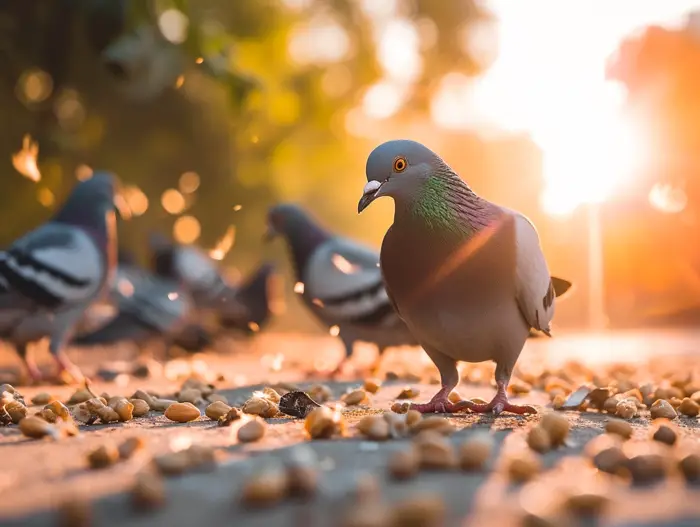
Importance of Clean Feeding Areas
- Prevent the spread of diseases: Pigeons can be susceptible to various diseases, and a dirty feeding area can become a breeding ground for bacteria, viruses, and parasites. By keeping the feeding area clean, we minimize the risk of disease transmission among the flock.
- Promote optimal health: Clean feeding areas help prevent contamination of food and water, ensuring that our pigeons receive proper nutrition and stay healthy. It also reduces the likelihood of pigeons ingesting harmful substances or pathogens that can compromise their well-being.
Tips for Maintaining Clean Feeding Areas
- Regular cleaning: I make it a habit to clean the feeding area daily, removing any leftover food, droppings, or debris. This prevents the accumulation of dirt and bacteria, keeping the area clean and hygienic.
- Use appropriate feeding equipment: Using suitable feeding equipment can make cleaning easier. I prefer using feeding trays or bowls that are easy to clean and disinfect.
- Provide fresh food and water: It’s essential to provide clean and fresh food and water to our pigeons. Regularly check the feeders and water containers for any signs of contamination, discarding any spoiled or dirty food.
- Rotate feeding areas: If possible, I rotate the location of the feeding areas in the loft. This helps to prevent the buildup of droppings in one spot and allows for easier cleaning and maintenance.
- Practice good hygiene: As a caretaker, I make sure to wash my hands thoroughly before and after handling food and water containers, reducing the risk of cross-contamination.
By following these tips and maintaining clean feeding areas, we can promote a healthy and disease-free environment for our pigeons. Remember, a little extra effort goes a long way in ensuring the well-being of our avian companions.
Conclusion
Maintaining the health of our pigeons is crucial for their well-being and performance. In this article, I have discussed the importance of cleanliness in preventing respiratory problems and maintaining clean feeding areas for our feathered friends.
By keeping the loft clean and dry, we can minimize the risk of respiratory diseases in pigeons. Regular cleaning, using appropriate feeding equipment, providing fresh food and water, rotating feeding areas, and practicing good hygiene are all essential in maintaining clean feeding areas.
Remember, prevention is key when it comes to pigeon diseases. By implementing these preventive measures, we can create a healthy and disease-free environment for our pigeons, ensuring their longevity and optimal performance.
I hope this article has provided you with valuable insights and practical tips to keep your pigeons healthy. By following these guidelines, you can enjoy the company of your pigeons and watch them thrive in a safe and clean environment.
